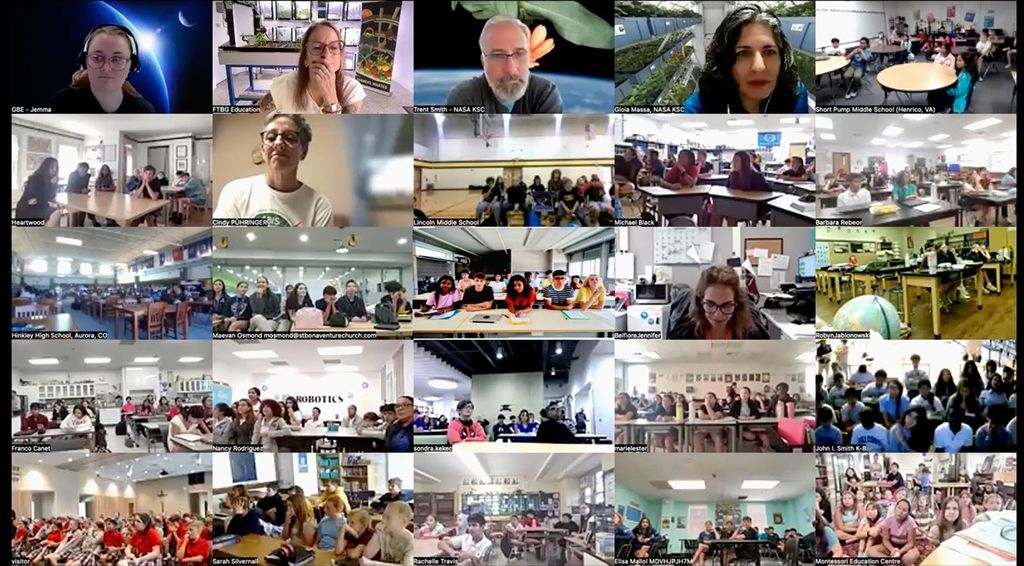NASA’s John C. Stennis Space Center marked the 40th anniversary of the historic Apollo 13 flight with exhibits and remembrances from Biloxi native Fred Haise Jr., who served as lunar module pilot on the mission.
During an afternoon of activities, Stennis hosted employees and area senior citizens to tour Apollo 13 exhibits, take photos with Haise, collect NASA-related items and offer their own remembrances of the 40-year-old mission.
In addition, for the next five months, Stennis is providing Apollo 13 exhibits and NASA collectible items to public libraries throughout the Mississippi and Louisiana area.
Established in the 1960s, Stennis played a pivotal role in all of the manned Apollo engines, testing every engine used on the flights. When that program ended, Stennis assumed responsibility for testing the main engines used for each space shuttle mission. No Apollo or space shuttle mission has ever failed as a result of engine malfunction.
“Stennis really grew up through the Apollo and shuttle programs to establish itself as the nation’s premier rocket engine testing facility,” center Director Patrick Scheuermann said. “We are very proud that, from Apollo to the present, every manned American space flight has been powered by engines tested by Stennis. Every employee takes great pride in contributing to the continued safety of our astronauts and to the success of each space mission, including that of Apollo 13, which ranks as one of NASA’s most amazing achievements.”
A highlight of the Apollo 13 anniversary events was the opportunity to hear Haise recount his memories of that dramatic space flight.
Scheduled as the third lunar mission, the Apollo 13 spacecraft was launched April 11, 1970 from Kennedy Space Center in Florida. Two days into the flight, the command module spacecraft was crippled by an oxygen tank explosion.
“(When the explosion occurred) I knew we had lost the moon landing,” Haise said. “I knew we had an abort.”
The explosion of the oxygen tank necessitated a perilous free-trajectory return to Earth. The astronauts were forced to power down the command module and use the lunar module as a space “lifeboat.” Haise, Commander James Lovell Jr. and Command Module Pilot John “Jack” Swigert Jr. faced a number of hardships during the return, including limited power, loss of cabin heat and a need to conserve water. They also were forced to construct a makeshift carbon dioxide filtering system to clean the air in the lunar module.
Hour-by-hour, the drama grew, as millions around the world watched and listened to latest news of the flight. Thanks to the quick decisions and heroics of both the astronauts and members of the mission control ground crew, Apollo 13 splashed down just miles from its targeted site about noon on April 17. It took less than an hour for recovery teams to reach the astronauts and lift them onto the USS Iwo Jima.
The mission quickly became known as a “successful failure” – a failure because the planned moon landing never materialized but a success because all three astronauts were returned home safely. In recognition of that fact, the crew and members of the Apollo 13 Mission Operations Team all were awarded the Presidential Medal of Freedom for their actions during the mission.
The three astronauts who flew the mission were hailed as heroes and remain among only 24 people every to fly to the moon. However, none of the three ever returned to space following Apollo 13. Haise was scheduled as commander of the Apollo 19 mission to the moon, but that flight was cancelled. Later, he commanded approach and landing test flights aboard space shuttle Enterprise. He went on to serve as an aerospace executive and received NASA’s prestigious Ambassador of Exploration Award in late 2009.
During his presentation to Stennis employees and visitors April 20, Haise recounted details of the now-famous mission and answered questions from the audience. He acknowledged feeling disappointed at first about failing to walk on the moon.
“But I look back on it now, and I’m not disappointed,” he said. “I feel fortunate to have had a chance.”
For information about Stennis Space Center, visit: https://www.nasa.gov/centers/stennis/.
Related Multimedia:
+https://www.nasa.gov/centers/stennis/news/releases/2010/CLT-10-060-cptn.html
– end –
text-only version of this release
Rebecca Strecker, NASA News Chief
NASA Public Affairs Office
Stennis Space Center, MS 39529-6000
(228) 688-3249
Rebecca.A.Strecker@nasa.gov




























